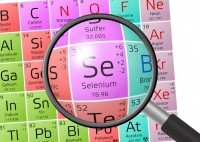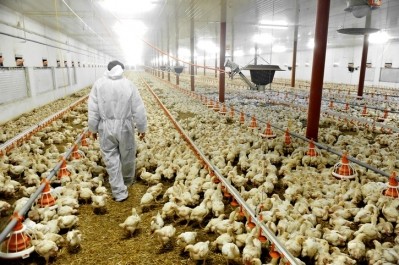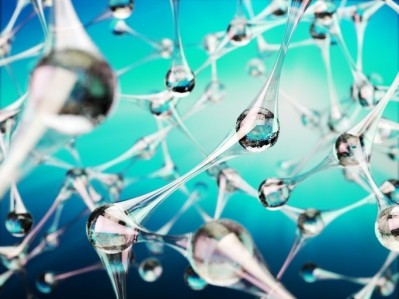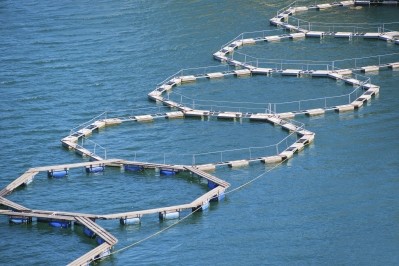Reviewers weigh up the successes and pitfalls of nano feed in poultry

Despite the growing body of research in this area, nanoparticles remain underutilised, not well characterised, and not well understood as poultry feed additives, they wrote in the journal Trends in Food Science and Technology.
In that context, the scientists said they set about reviewing the research on their potential in poultry feed, while also proposing new strategies in nanoparticle use in agriculture or animal nutrition.
The review team, whose members work in several universities and research institutes across Australia, said nanoparticles (NPs) can enable direct transportation of compounds to targeted organs or systems while avoiding the fast degradability often seen with antibiotics, and can encourage multiple health benefits.
“NPs have been used in poultry feed to decrease numbers of harmful bacteria in the chicken microbiota ... and have been shown to stimulate growth of beneficial bacteria (Mahmoud, 2012) and, hence, can, potentially, be used to improve growth and performance,” they noted.
The researchers, through a wide review of the literature, hoped to determine various aspects of the impact of NPs in the birds from overall health and immunity, growth and performance and antibacterial prospects.
Silver
They noted that silver, currently the most common nanoparticle investigated for use in chicken feed, has been shown to improve the microbiota of chickens: “However, the positive results are tempered by the finding that silver nanoparticles have relatively high toxicity in birds. The question therefore arises as to whether other nanoparticle forms of essential metals and natural compounds can be safely delivered to provide positive impacts on health and productivity without the toxic side effects that can be seen with silver nanoparticles,” cautioned the authors.
Selenium
In terms of selenium NPs, the authors found they can enhance the performance, growth and overall health of poultry.
NPs using selenium in concentrations ranging from 0.15 to 1.20 ppm were administered to poultry and were found to increase average daily gain of broilers, showing that selenium, in the form of the nanoparticle had higher effects on performance than inorganic selenium, said the reviewers.
A study showed selenium NPs exhibited a positive influence in the body of the chicken with reduced toxicity achieved at low concentrations, as compared to inorganic selenium (Hu et al., 2012).
Other studies supported these claims indicating the best performance with broilers would be achieved with 0.3 ppm (Mohapatra et al., 2014) and 0.5 ppm (Bagheri, Golchin-Gelehdooni, Mohamadi, & Tabidian, 2015) selenium NPs as compared to both organic and inorganic selenium sources.
The nanoscale refers to a size range typically between 0.2 and 100 nm where, at this scale, properties of the material begins to differ with respect to their physical, chemical and biological properties from those at the larger or ionic scales.
Fuxiang et al., 2008 found antioxidant functions were enhanced at levels of 0.15–1.2 ppm as well as overall immunity at 0.6–1.2 ppm of selenium NPs
Cai et al., 2012 and Selim et al., 2015 proposed the concentration of selenium NPs fed to broiler chickens should not exceed 1.0 ppm with optimal levels being 0.3–0.5 ppm as higher levels could lead to some severe pathological changes to liver histology. Cai et al. (2012) also observed enhanced antioxidant activity at 0.3 ppm of selenium NPs while 2.0 ppm concentration levels showed deterioration of immune functions.

Observations also included increased levels of IgG antibodies, important in controlling infectious tissues and IgM antibodies, significant for a quick response against antigens.
Copper
Meanwhile, copper NPs supplemented to poultry feed had mixed outcomes in some studies, the team saw similar concentrations of the nanoparticle could be either beneficial or detrimental to poultry health.
They cited a study whereby a concentration of 50 ppm of sizes 2–15 nm showed a decrease in metabolic rate with regard to O2 consumption and heat production (HP), two important regulators in the developmental stages of an egg - thus a decrease in these factors resulted in a decrease in embryonic development. NPs did not affect immunoglobulin concentrations or humoral responses (Pineda, Sawosz, Vadalasetty, & Chwalibog, 2013).
However, the team also referenced a study whereby the same Cu concentration (50 ppm) with larger NP size distributions of 15–70 nm was reported to increase body weight while improving feed conversion ratio. Both breast and leg muscle increased along with a decrease in mortality in broiler chicks upon inclusion of copper NPs in feed according to Mroczek-Sosnowska, Lukasiewicz, et al., 2015.
FeedNavigator will get the latest insights into poultry gut health in our free to access, online webinar on 2 March 2017. Speakers include world leading experts on the topic. You can find out more by following this link.
“The opposing results could be due to a number of variables including both experimental factors and external factors, such as housing, feed, microbiota, etc,” said the Australian reviewers.
Various other metals have been synthesized as NPs and supplemented to poultry feed:
“For example, zinc oxide NPs have been synthesized and coupled onto a loaded active calcium alginate film. The NPs were tested for toxicity and successfully reduced the viability of Salmonella typhimurium and Staphylococcus aureus in vitro (Akbar & Anal, 2013)."
Metal oxides
The reviewers also looked at studies where other metal oxide NPs showed similar antibacterial activity:
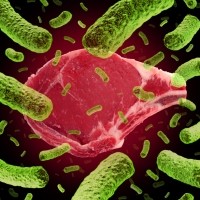
"A maximum antibacterial activity against Salmonella sp. was obtained using Zirconium dioxide (ZrO2) at a concentration of 2.5 μg/ml (Ravikumar & Gokulakrishnan, 2012).
"Platinum NPs, 1–20 μg/mL concentration reduced cell numbers and increased the apoptosis process of cells in brain tissue. There was no effect observed on the growth and development of the embryos (Prasek et al., 2013).
“The investigation of the effects of these metal NPs has mostly focused on reducing antibacterial activity rather than their influence on performance and growth of poultry, representing an opportunity for future research,” highlighted the reviewers.
Zeolites
There have not been many studies investigating zeolites nanoparticles in poultry, they concluded.
Zeolites, said the authors, have been reviewed and extensively researched in the poultry industry.
They noted research showing Zn-bearing zeolite clinoptilolite, (Zn-ZCP), prepared by ion exchange methods at 80 ppm of NPs, improved growth and feed intake ratio of broilers consistent with a significant increase in fresh weights of tibia and pancreas. A key regulator, metallothionein, for zinc absorption and transportation was also used to improve the effectiveness of the zeolite (Tang et al., 2015).
Herbs and oils
The reviewers also looked at NPs using extracts of natural antibacterial products such as certain herbs and oils. A study involved a turmeric extract enclosed in a nanocapsule was found to improve meat quality without affecting performance as a feed additive for regular broiler feed, they saw.
Clay minerals of nano-suspensions were found to improve antibody protection against infectious diseases such as Newcastle disease, infectious bronchitis and bursal disease, said the reviewers.

“Solution of nano-suspensions were synthesised by physical approach with mechanic wet grinding of clay minerals to a nano range and later added to potable water to make three concentrations: 1%, 1.5% and 2%. [The] 1% and 2% of the suspension were fed to broiler chickens where feed conversion ratio, body weight and body weight gain significantly improved (Elshuraydeh, Al-Beitawi, & Al-Faqieh, 2014),” they noted.
Vaccine delivery
Other nanoparticles studied for improving broiler performance, they noted, include drugs encapsulated NPs such as Newcastle virus vaccine in a polymer.
"Nanoparticles are now widely studied for use as new tools for targeted drug delivery activity and nutrition improvement. Their distinct size and properties can be both beneficial and disadvantageous; while their nano size enable drugs and other components to be delivered to desired target and rapidly produce an effect, nanoparticles can also easily pass through natural barriers of the body such as the blood-brain and mucosal barriers causing inflammation and toxicity. It is therefore vital to manipulate and produce desirable NP's size and concentration in order to achieve maximal benefits from NPs while avoiding toxicity," said the team.
Further research
The reviewers called for more studies evaluating the influence of NPs on intestinal microbiota of chickens – this would allow the scientific get a deeper understanding of their role on beneficial gut microbes and metabolites production.
They said all current studies investigating the effect of different NPs on microbiota, especially known pathogens, are done using culturing methods. However, they noted recent advances in sequencing technology would allow a complete overview of NPs interactions with intestinal bacteria.
Additional trial work should include toxicology, histology and NP residue analysis in broilers of market weight or in egg before any wide adoption could take place, concluded the authors.
Source: Trends in Food Science and Technology.
Published online ahead of print: http://dx.doi.org/10.1016/j.tifs.2016.10.013
Title: Nanoparticles in feed: Progress and prospects in poultry research
Authors: S Gangadooa, D Stanley, RJ Hughes, RJ Moore, J Chapman
